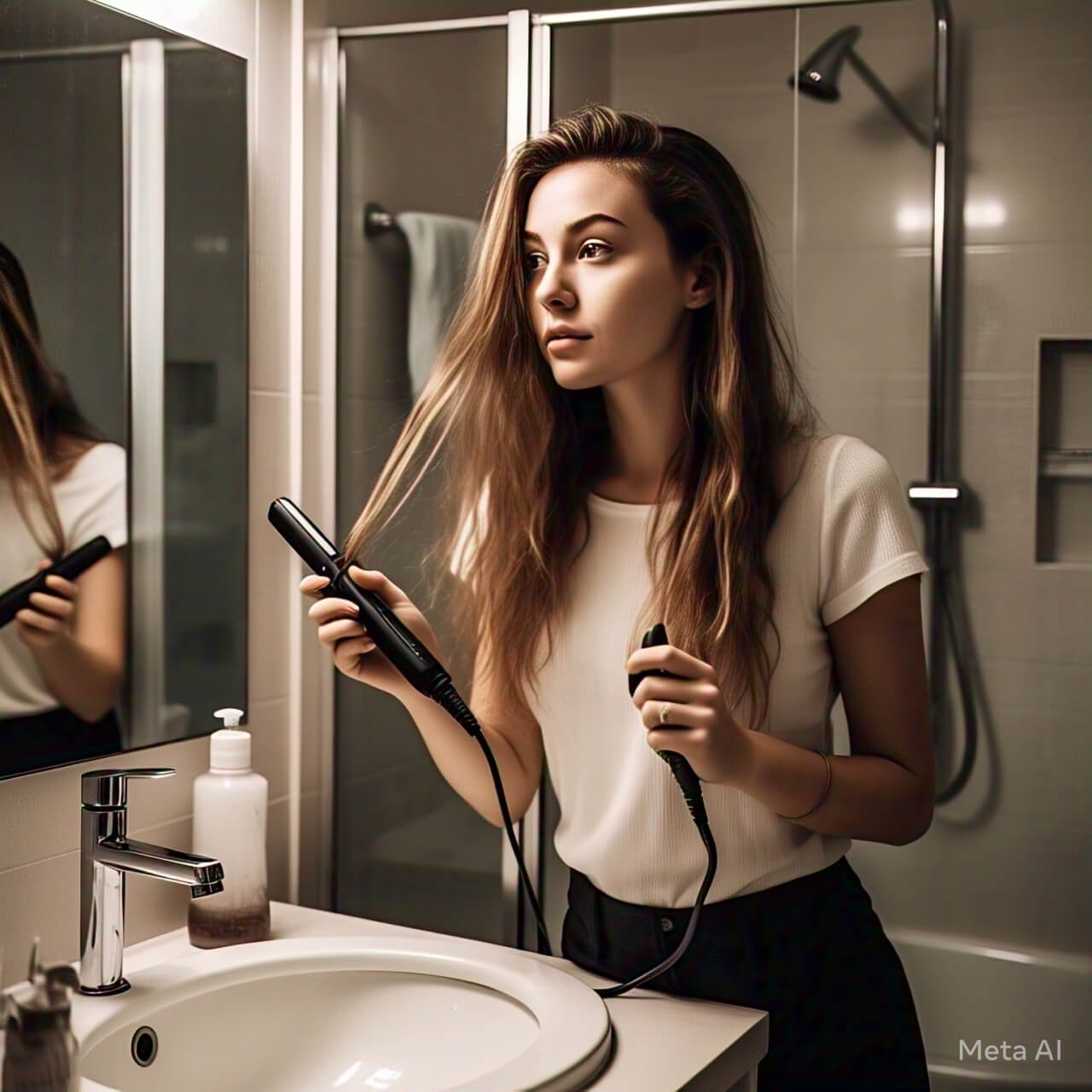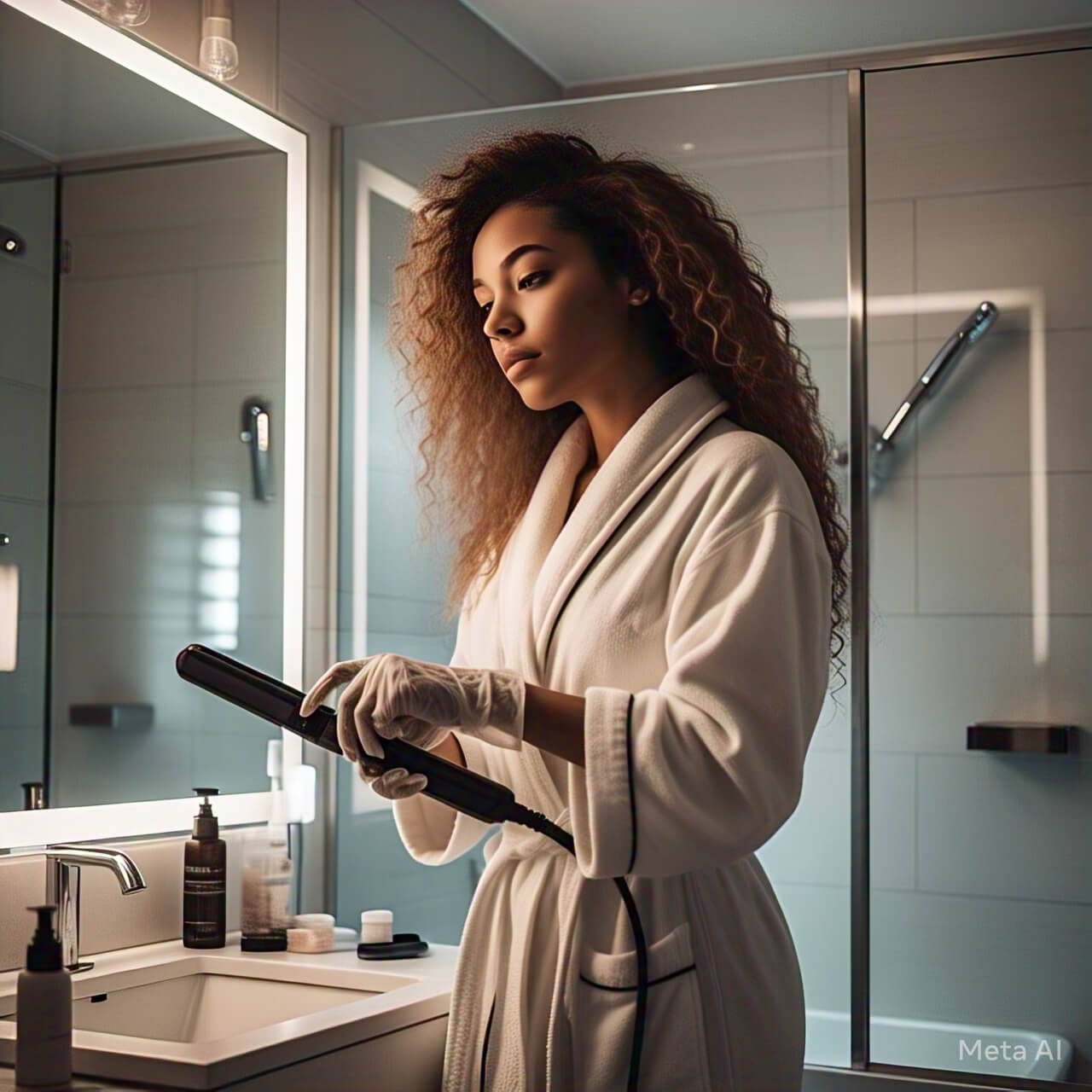Using a hair straightener safely is important to avoid damage to your hair and prevent accidents. A hair straightener uses heat to smooth your hair, but if not used correctly, it can cause burns, breakage, or even fire hazards. To keep your hair healthy and stay safe, you need to follow some simple steps. Always start with clean, dry hair, as wet hair can get damaged easily.
Use a heat protectant spray to shield your hair from high temperatures. Adjust the heat setting based on your hair type—fine hair needs lower heat, while thick hair can handle more. Never leave the straightener plugged in unattended, and store it safely after cooling down. By following these tips, you can achieve sleek, straight hair without risking damage or injury.

10 Tips for Safe Hair Straightener Use
- Start with dry hair
- Use heat protectant spray
- Choose the right temperature
- Avoid holding too long
- Keep it away from skin
- Unplug after use
- Store properly when cool
- Don’t use on wet hair
- Clean plates regularly
- Don’t share with others
1. Why Is Dry Hair Important?
Using a hair straightener on wet or damp hair can cause serious damage. When water heats up quickly, it creates steam inside the hair shaft, leading to breakage and frizz. Always towel-dry your hair completely and use a blow-dryer if needed. Wet hair is weaker, and high heat can make it brittle over time. For best results, ensure your hair is 100% dry before straightening to keep it smooth and healthy.
2. The Role of Heat Protectant Spray
A heat protectant spray forms a barrier between your hair and the hot plates. It reduces moisture loss and prevents burns. Apply it evenly from roots to ends before straightening. This step is crucial because high temperatures can strip natural oils, leaving hair dry and damaged. A good heat protectant also adds shine and makes styling easier.
3. Choosing the Right Temperature
Not all hair types need the highest heat setting. Fine or damaged hair should use low heat (around 250°F–300°F), while thick or curly hair may need 350°F–400°F. Too much heat can fry your hair, causing split ends. Test different settings to find what works best without causing damage.
4. How Long Should You Hold the Straightener?
Holding the straightener too long in one spot can burn your hair. Glide it smoothly down each section for 3–5 seconds. If your hair isn’t straight after one pass, let it cool before reapplying heat. Repeatedly clamping hot plates on the same spot weakens hair strands.
5. Avoiding Skin Burns
The plates of a straightener get extremely hot. Keep them away from your scalp, ears, and neck. If you accidentally touch your skin, run cold water over the burn immediately. Always be mindful of where the straightener is to prevent injuries.
6. Why Unplug After Use?
Leaving a straightener plugged in can cause fires if it touches flammable objects. Always unplug it as soon as you’re done and let it cool on a heat-resistant surface. This simple habit prevents accidents and saves energy.
7. Proper Storage Matters
Once cooled, store your straightener in a dry, safe place. Avoid wrapping the cord tightly, as it can damage the wires over time. Keeping it in a case or drawer protects it from dust and accidental damage.
8. Never Use on Wet Hair
As mentioned earlier, wet hair and heat don’t mix. Even slightly damp hair can suffer from steam damage, leading to bubbles in the hair shaft (known as “bubble hair” damage). Always ensure your hair is fully dry.
9. Cleaning the Plates Regularly
Product buildup on the plates can make straightening less effective and damage hair. Wipe them with a damp cloth (when cool) or use rubbing alcohol for a deeper clean. Clean plates glide better and distribute heat evenly.
10. Don’t Share Your Straightener
Sharing straighteners can spread bacteria and oils from one person’s hair to another. It can also cause hygiene issues, especially if not cleaned properly. Stick to using your own tools.

FAQs About Hair Straightener Safety
| Question | Answer |
|---|---|
| Can I use a hair straightener every day? | No, daily use can cause dryness and breakage. Limit to 2–3 times a week. |
| What’s the safest temperature for thin hair? | 250°F–300°F is best to avoid damage. |
| Can a hair straightener cause a fire? | Yes, if left plugged in near flammable materials. Always unplug after use. |
| Is it okay to straighten extensions? | Yes, but use low heat and a heat protectant to prevent damage. |
| How do I know if my hair is heat-damaged? | Look for split ends, excessive dryness, or lack of shine. |
By following these tips, you can use your hair straightener safely and keep your hair looking healthy and beautiful.









